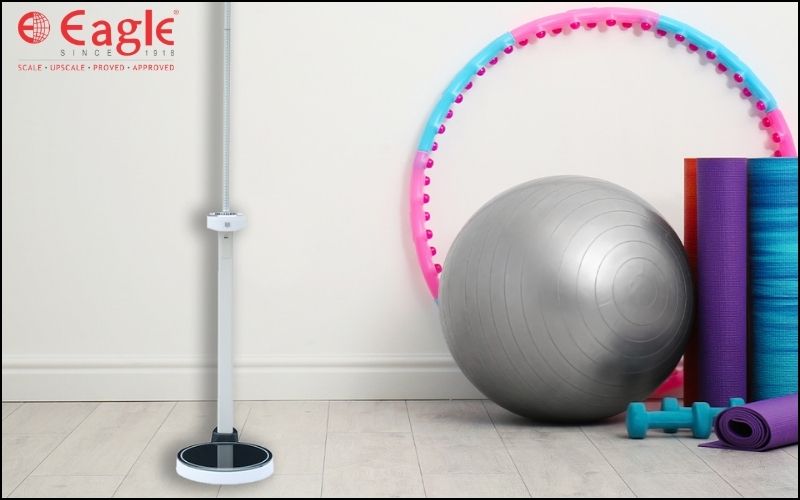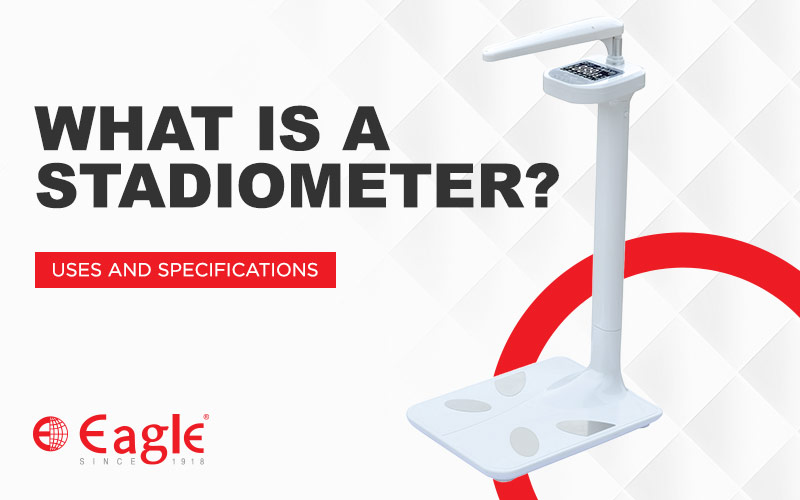Stadiometer is an important tool in medical settings that can give you an accurate estimation of a person’s height. This easy-to-use tool gives physicians a way to quickly assess the height of an individual while planning for their treatment.
These vital instruments can not only increase the height measurement accuracy but they also make the process easier. This blog explores the main features and specifications of stadiometers in detail. So, keep on reading till the end to know what makes these instruments essential for all healthcare facilities.
What is a Stadiometer?
Specifications of a Stadiometer
- Parts of a Stadiometer
- Pipe and Ruler
- Head Slider
- Base
- Wall Stopper
Types of a Stadiometer
- Wall Mounted Stadiometer
- Portable Stadiometer
Uses of a Stadiometer
- Medical Assessment
- Growth and Development of Toddlers
- Yearly Assessment of Young and Adults
- Clinical Research
- Police and Military Tests
What is a Stadiometer?
A stadiometer is an essential tool that gives a reliable measure of the height or stature of an individual. Doctors can use this instrument during diagnosis or yearly health assessments of the kids and adults.
A typical stadiometer consists of a vertical graduated rod that rests firmly on a flat and even base. For measuring height, a person stands on the base against the rod with their head held in the Frankfurt Plane. The term Frankfurt Plane describes a standardized anatomical plane that extends in the horizontal direction through the lateral facial profile.
In this situation, an imaginary line from your ear canal to the area just under the eye is exactly parallel to the ground which gives you an accurate estimation of the height by preventing tilting of the head.
To record the height, you just have to look at the scale which is usually in millimeters, centimeters, and inches.
Some modern height and weight scales come with a digital display which gives you more readability. These scales also offer features like BMI measurement, unit conversion, storage, etc.

Specifications of a Stadiometer
The following stadiometer specifications make it an essential tool in healthcare:
- There is a flat base where you can stand to get the right height measurements.
- These height scales are extremely reliable and easy to use.
- Stadiometers are very portable.
- They give you height values in more than one unit i.e., centimeters, inches, etc.
- You can find these in digital, analog, portable, and wall-mounted types based on your needs.
- These scales are very easy to clean and maintain.
- The use of quality construction materials that are resistant to high pressure, heat, and wear and tear makes these highly durable.
Parts of a Stadiometer
A typical stadiometer has the following main parts:
- Pipe and Ruler
Most stadiometers consist of 4 pipes and a ruler with the scales of measurement on them. To avoid scale loss, you need to make sure the pipes and ruler are well embossed.
Some versions use a detachable plug-and-play system which makes the tool more portable and flexible.
- Head Slider
This part of the stadiometer can slide on the scale to determine the tip of the head of the subject accurately. In some versions, you need to slide the head up or down and then lock it in its place manually. More advanced versions, however, come with a “Knock Down” system which makes it stay in its place automatically.
- Base
The base of the stadiometer has a heel limit and a flat footrest. This gives you the perfect posture when standing on the scale and that gives you a more accurate value of the height.
- Wall Stopper
The purpose of this part is to keep the pipe perpendicular to enhance the stability of the instrument as well as the validity of the results. This part is usually at the end of the fourth pipe and it serves to hold it so that it doesn’t move about needlessly.
Types of a Stadiometer
Following are the two main types of stadiometers that you should know
- Wall Mounted Stadiometer
This type of stadiometer is fixed with a wall and you have to stand against the wall in a straight position to get readings. These stadiometers are lightweight and more affordable.
However, their durability and accuracy are somewhat questionable. These scales are ideal for use in applications where a very accurate height measurement is not the main concern.
- Portable Stadiometer
This type of stadiometer consists of a base and a vertical pipe with scale. These height scales are sturdier and more portable. This type of stadiometer is used to measure the heights of patients, athletes, and candidates applying for fitness tests in the police or military.

Uses of a Stadiometer
Following are some instances of stadiometer use in different fields:
- Medical Assessment
Stadiometers are most commonly used in medical settings to determine the accurate heights of kids and adults. This information can help these professionals with routine or yearly assessments of the growth and fitness of the patients.
- Growth and Development of Toddlers
Using this instrument, a doctor can monitor the growth of toddlers concerning their age. This can uncover certain deficiencies that need to be addressed so that a child can develop properly through the years.
- Yearly Assessment of Young and Adults
Doctors use stadiometers to keep track of the yearly growth of both young kids and adults. This yearly assessment can reveal certain areas where the patient needs help and support to avoid future health risks.
- Clinical Research
Another common application of stadiometers is in clinical studies and research. Professionals can use these to record the heights of their subjects and see whether the drug or medical procedure they have been studying is affected by it in any way or not. They also use this for general record-keeping and trend identification.
- Police and Military Tests
And last but not least, stadiometers are extensively used in police and military test centers to rule out unsuitable and unfit candidates based on their heights.
Conclusion
Choosing the right stadiometer can increase your measurement accuracy and reliability in medical applications. It can help you remove errors in the height measurements which makes diagnosis and treatment more effective.
This instrument facilitates the personalized monitoring of the growth and development of both young kids and adults which makes it an essential piece of equipment in healthcare settings.
Visit Eagle Scales today to order our top-quality height and weight measuring scales for all medical and other applications.






